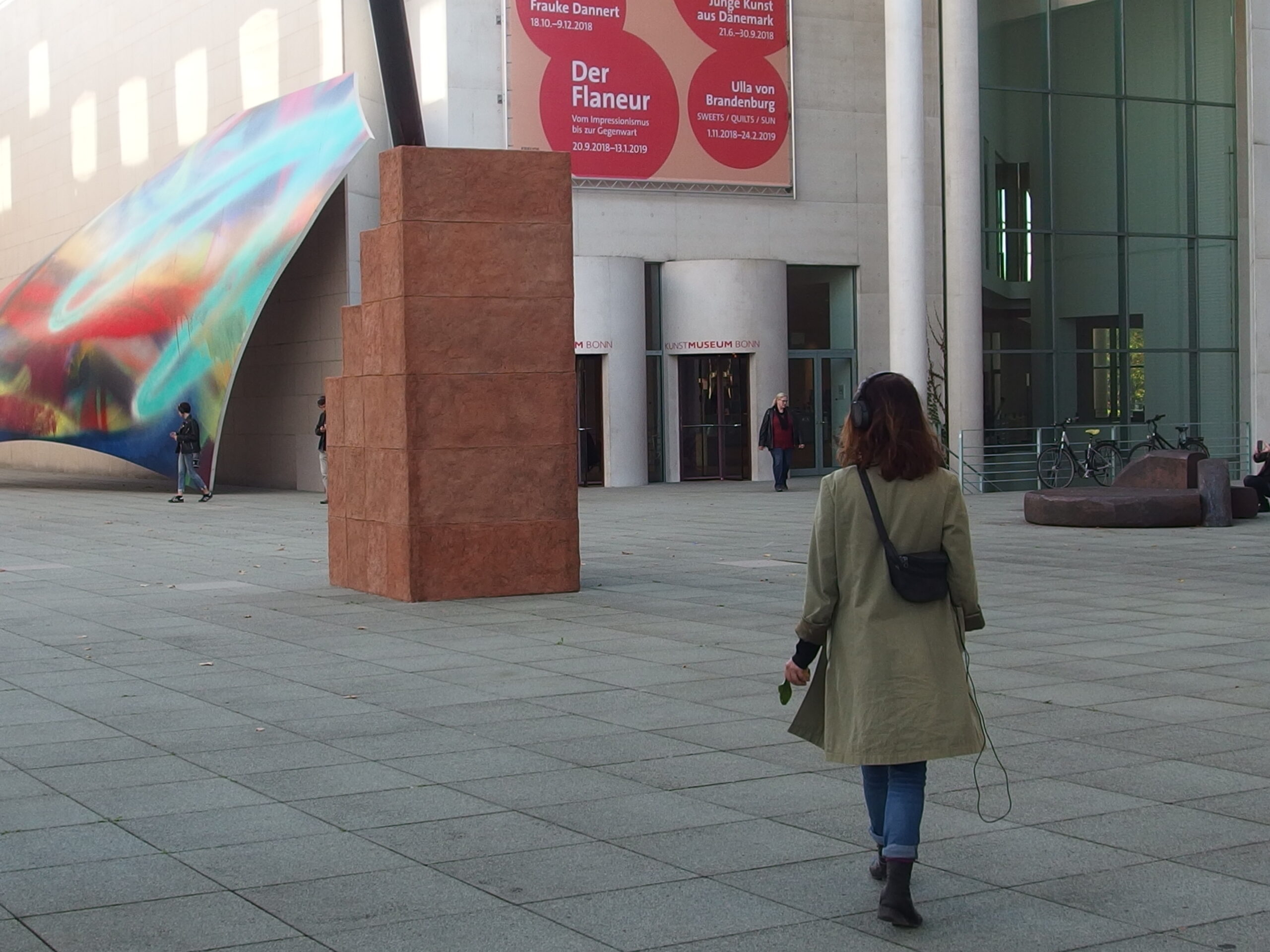
The audio walk was commissioned by the Kunstmuseum Bonn on the occasion of the group show “The Flaneur: From Impressionism to the Present”. Taking Edgar Allan Poe’s short story “The Man of the Crowd” as a starting point, this audio walk examines the topic of flanerie from a feminist perspective and presents four alternative characters from art and literature – Sophie Calle, Alice in Wonderland, Martha Quest and Marcel Duchamp’s Rrose Selavy – as possible flaneuses. While listening to their stories, the participant is taken through the area surrounding the museum.
“When we think of the woman in the crowd, walking among other people, does she ever turn around and look back? Suddenly having distinct features, a personality, an identity? What if she, in turn, was the flaneur, or rather the flaneuse? One that is not relegated to the periphery? One that has her own way, her own wishes and desires? Is it even possible to think of a figure that transcends this binary opposition of established gender norms?”
Credits
Sound Design by Jonas Palzer

